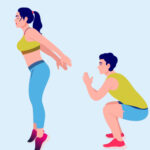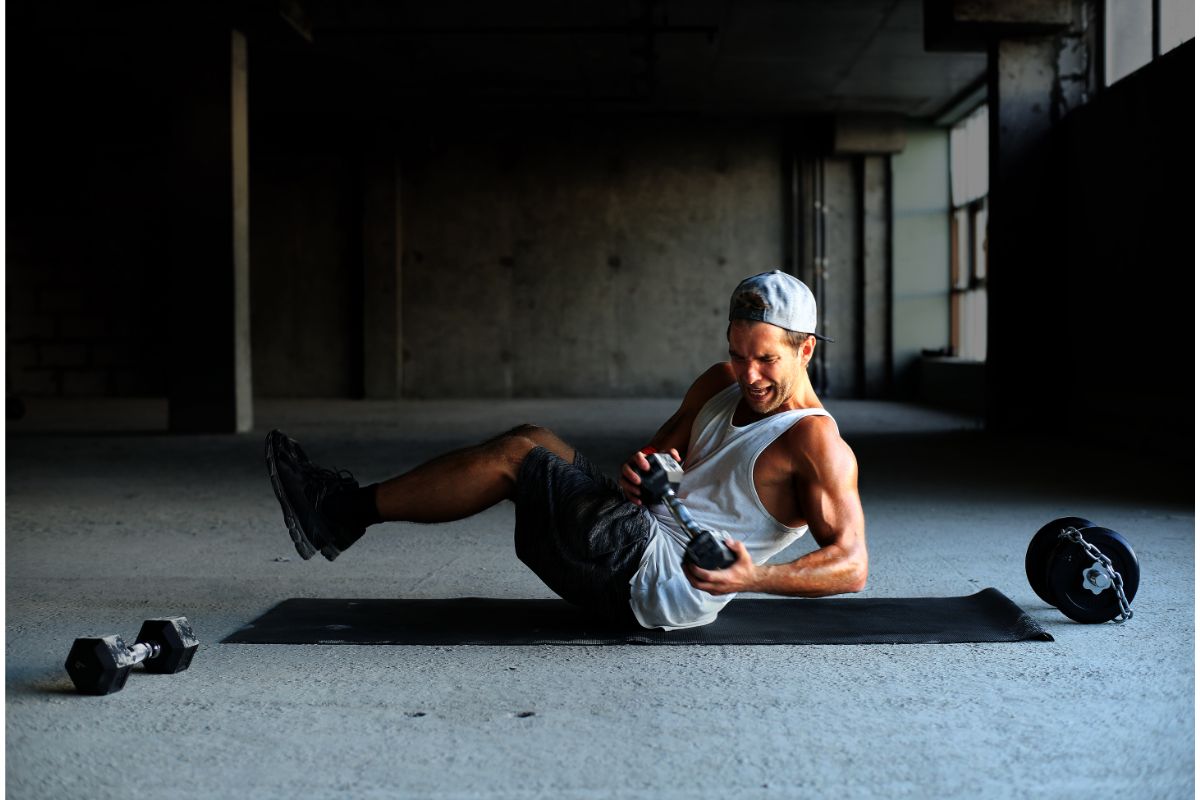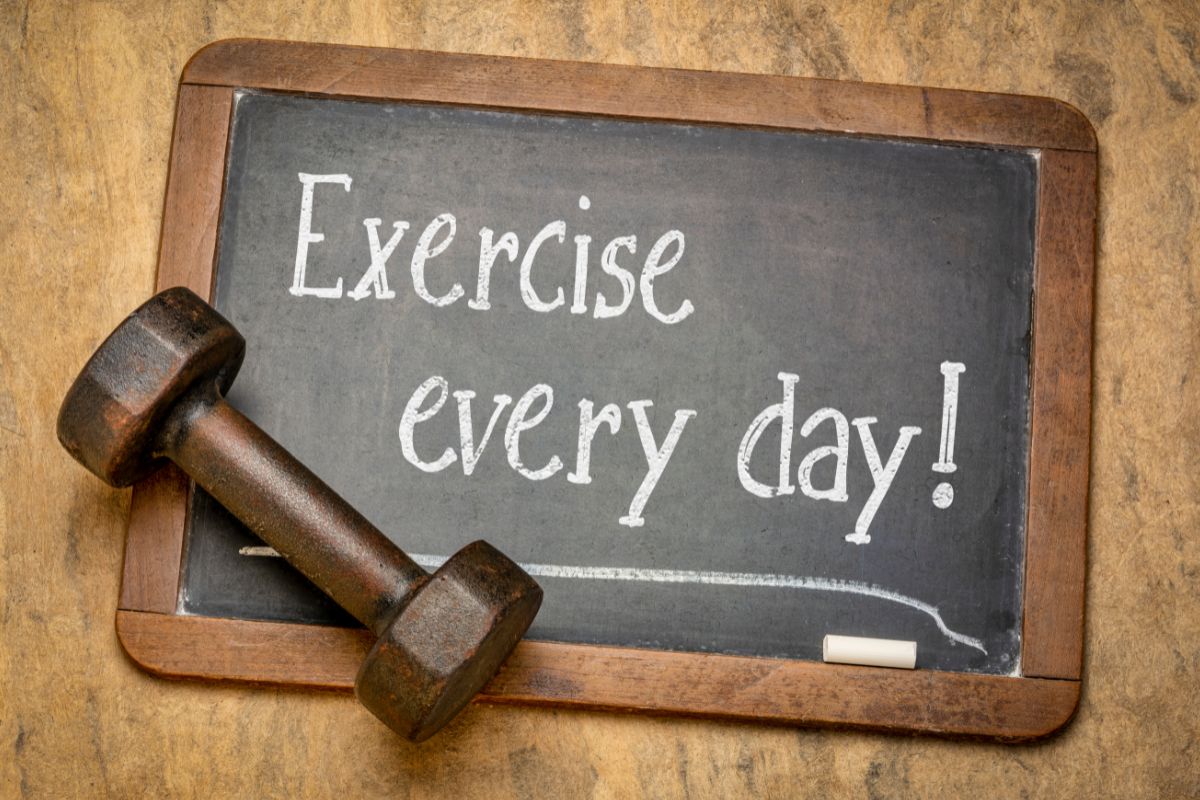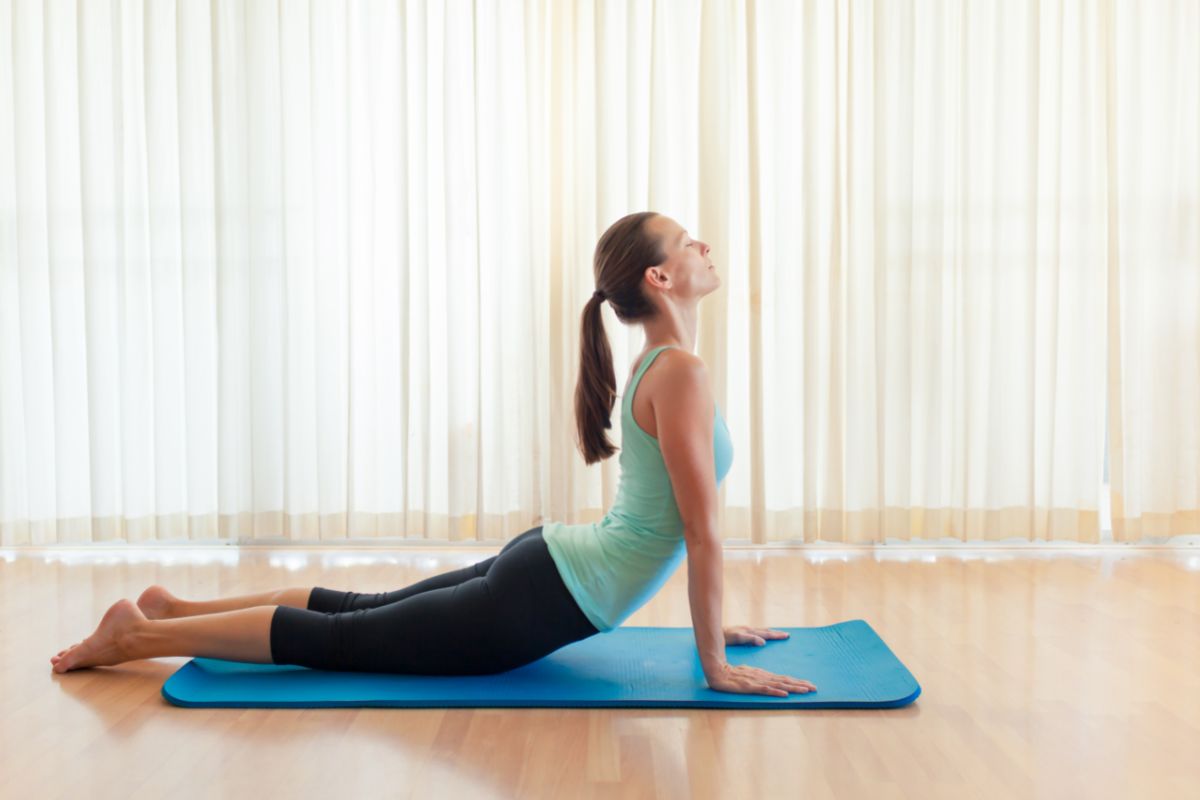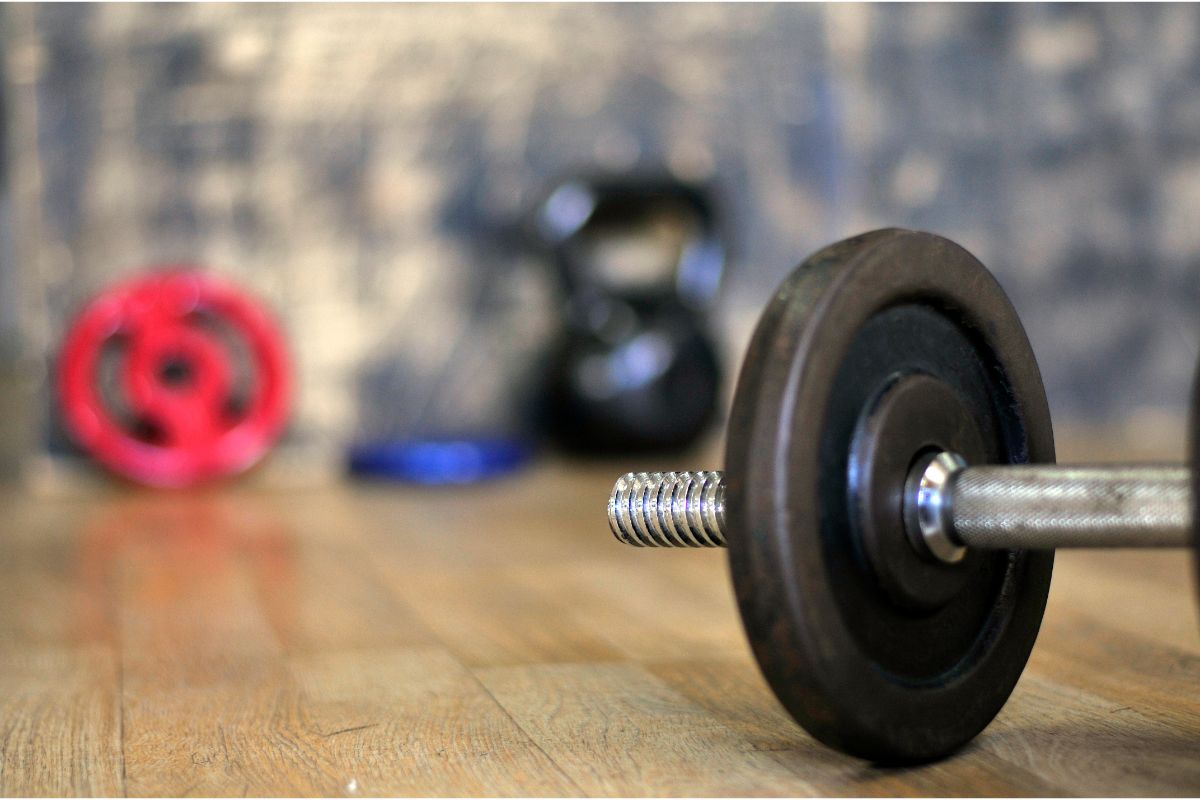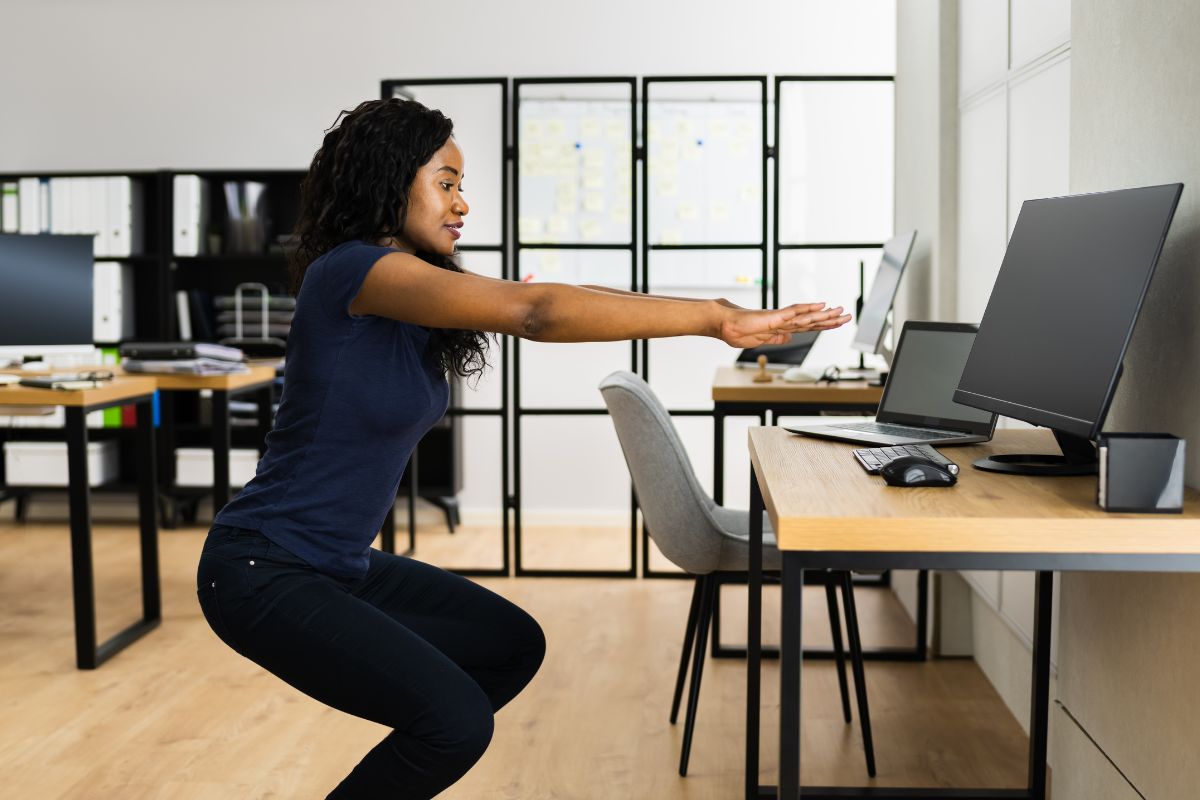Last Updated on August 19, 2022 by TJ Daniels, Certified Personal Trainer
When you are just starting at the gym, or even if you are working out at home, it can be super easy to slip into bad habits and mistakes while performing exercises.
These bad habits can easily manifest into injuries and should be avoided.
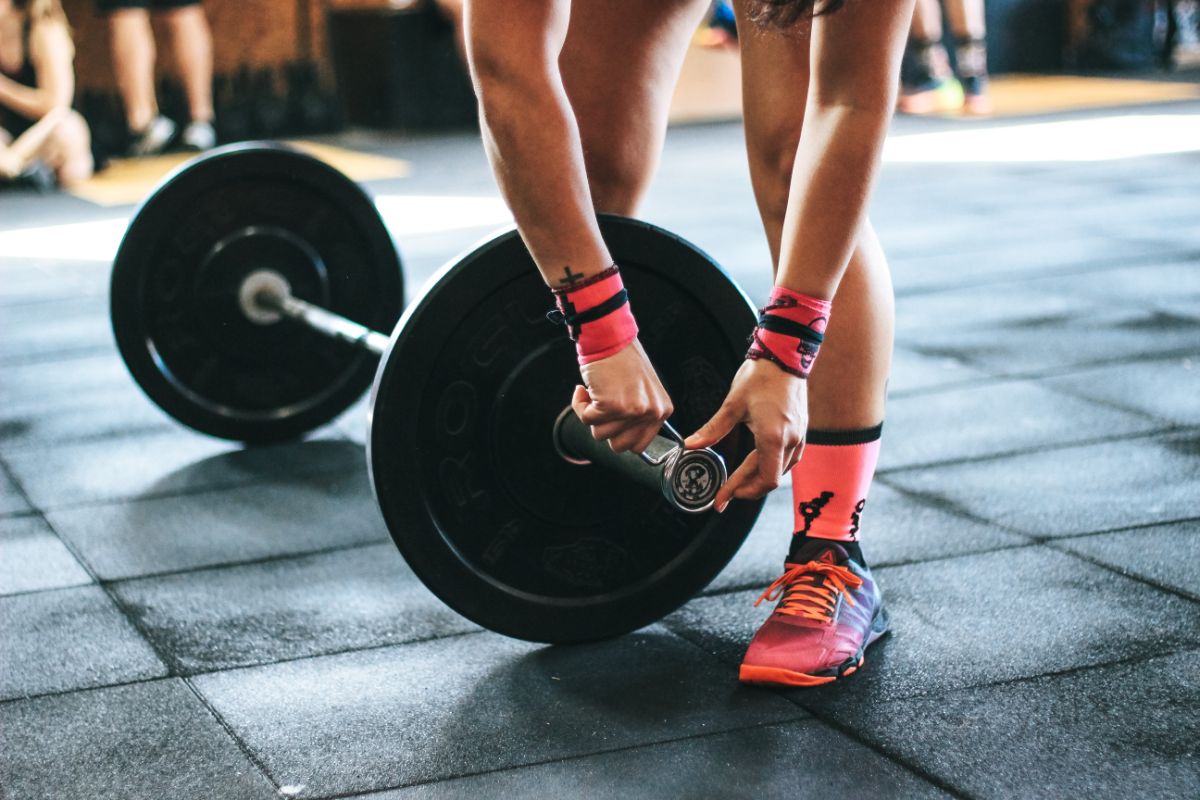

Luckily for you, we have made a list of six different tips for barbell exercises, so you can work out safely, and get the best results out of your routine.
So, what are we waiting for? Let’s begin!
6 Tips For Barbell Beginners
There are so many different ways that you can use a barbell in a variety of exercises.
The barbell is a staple piece of any gym equipment and can be used to train many different muscle groups and areas of the body.
1. Deciding The Weight Of Our Barbell
One of the most important decisions for you to make is how heavy you want your barbell to be.
Naked barbells (barbells with no weight plates) traditionally have two different weights. The longer, more traditional barbell, that you normally see on the bench or squat rack, is usually 45 pounds. The shorter barbells, which are often found in a horizontal or vertical rack of some sort and used for curl or tricep exercises, are normally 25 pounds.
These weights refer to the weight of the bar alone, which you can then add weight plates to either end to gradually build up and increase the total weight.
This is incredibly useful as you can vary the weight you lift depending on the day and muscle you are training, and also add weight as you get stronger along your fitness journey.
Aside from the main weight plates which weigh from 5 pounds to 45 pounds, there are also smaller-sized weight plates that you can add to your barbell.
These are very useful when it comes to gradually increase the weight that you want to lift. There are usually around 2.5 pounds or sometimes called “chips”.
Choosing the correct weight for you personally is super important because if you start with a weight that is too heavy, you can damage your body and cause injury to your muscles which is very dangerous and could set you back several weeks or longer.
You need to listen to your body. Your body will tell you how much your body can hold and lift – it shouldn’t be easy but it shouldn’t be impossible either.
2. Increase Your Loads Slowly
The next tip we have for you when you start lifting using a barbell after you have determined what weight to start with is around how and when should we increase weight. The rule here is simple: only after you have mastered the form of the exercise and can do 15 reps for 3 sets with ease, that is when you should start to gradually add weight to the particular exercise.
Keep in mind, that just because you can add weight to one exercise does not automatically mean you can add weight to all of your exercises. You need to go through the same rule for every exercise you are doing, understanding that if you try to increase the weight too fast you may injure yourself and end up delaying your rate of progress instead of increasing your gains through the additional weight.
The great thing about training using barbells is that it is super easy to track your progress.
As you add more plates and increase the weight you are lifting you will be able to see how far you’ve improved from the weight that you started with.
It is important to ensure you are using clamps on both ends of the bar to avoid the weights from sliding off the ends, especially when you are increasing your weight.
Perfecting your form before you increase the weight will be more effective overall and allow you to increase your strength and muscle mass as well as help prevent injury.
3. Enlisting A Trainer
You should never be afraid to enlist the help of a trained professional, especially when you are beginning to use a new piece of equipment.
Using gym equipment, such as a barbell, can be very technical and it is important to use it correctly with the correct form because as mentioned before, it helps to prevent any injury.
Of course, you could always read articles online, in magazines, or watch YouTube videos, but nothing will be better or more useful than asking a trainer, who could give you both demonstrations and corrections and real-time, live feedback.
Getting the correct knowledge before you begin using the equipment will help you in the long run on your gym journey.
One-on-one instruction is always recommended when you want to try or learn something new.
4. Don’t Rush Your Lifts
One of the most important things to stress when it comes to exercising with barbells is to not rush your lifts.
You need to give each lift the time it deserves so that you can feel the benefits of the movements and how it is affecting each of your muscles and all the areas it affects.
The five main movements in barbell lifts are squats, deadlifts, bench presses, overhead presses, and bent-over rows.
It can be tempting to perform the exercises as fast as possible to move on to the next, but you should always spend the right amount of time on each move.


As we said earlier, this will help you to feel the benefits of every lift and movement and will properly work out your muscle groups.
You should start with a weight you are comfortable with and low rep ranges to start.
Focus on one type of lift during each session to ensure you have perfected the form for the lift and that it has properly engaged the areas of the body where it is supposed to be working.
5. Chalking Up
An easy tip for beginners is to invest in some chalk! Use it on your hands before you start lifting and it will act as a gripping agent and make it much easier for you to grip on to the barbell.
Working out can get very sweaty, especially your hands when they are holding and tensing around the same item for a prolonged amount of time.
The chalk will absorb the sweat and help your hands to stay firmly gripped so you can concentrate on the exercise that you are doing, without having to worry about your hands accidentally slipping or letting go of the barbell.
6. Positions And Grips
When it comes to lifting with a barbell, there are two different types of grip and two different rack positions.
Honestly, it sounds more complicated than it is, so don’t worry. You’ll get the hang of it pretty quickly!
The two main grips are called overhand and underhand and most exercises will use one of these two grips.
Overhand refers to your hand being on top or over the bar, whereas with an underhand grip your palm should be beneath the bar. It is as easy as it sounds!
These grips are super important in ensuring you are correctly performing an exercise so you should always check to see which grip you should be doing.
The two rack positions are front and back. The front rack position is when the barbell is held in front of the body.
It should be resting on your shoulders with an underhand grip.
A back rack position is when the bar is held behind the neck, still resting on the shoulders and the hands are in an overhand grip position.
Final Thoughts
So, these are the basic things you should know about barbell lifting! With these tips, you will be a barbell lifting pro in no time!
Following the above tips will help you perfect your gym routine and help you to feel more comfortable in the gym.
Let’s face it, no one wants to look lost in the gym and now you won’t have to!
Hopefully, this has been a very interesting and useful article for you and you now feel a lot better about lifting with a barbell!
- How To Start HIIT Workouts [Beginner’s Guide] - May 18, 2023
- How To Sneak A Workout In While Taking Care Of Your Baby - March 17, 2023
- How To Build Your Chest With Dumbbells [Guide] - February 9, 2023

